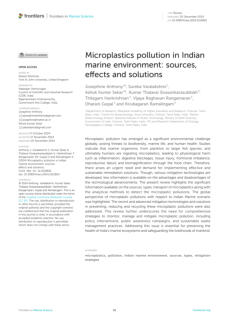Environmental studies 2024




Click on the
octopus to return to
the top of the page

Authors: Darshika Manral, Ilse Bos, Mark de Boer, Erik van
Sebille.
Juvenile Kemp's ridley turtles, a critically endangered
species mainly living in the Gulf of Mexico, strand on the
Dutch coasts every year. This study examines several
instances over the last 15 years where juvenile turtles were
found alive but hypothermic during winter in the
Netherlands to understand how they were transported in
this state.


.
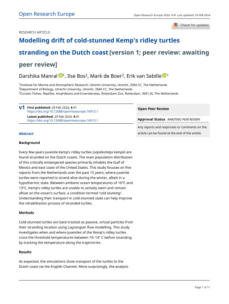

Authors: Zehao Wang, Defeng Zheng, Xingsen Guo,
Zhongde Gu, Yueqiang Shen, & Tingkai Nian
This study addresses the impact of submarine landslides
on underwater structures, focusing on bucket
foundations. It aims to fill a knowledge gap by developing
a fluid-structure coupling system using the coupled
Smoothed Particle Hydrodynamics (SPH)-Finite Element
Method (FEM) to analyze the displacement response of
these foundations during landslide impacts. Its authors
outline the methods used, the results obtained, and the
significance of the findings in understanding the dynamic
response and failure mechanisms of underwater
structures under extreme conditions.


.
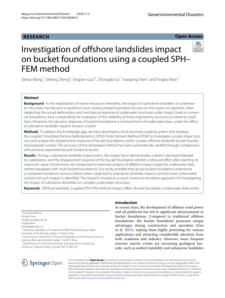
Authors:
Sven Bergmann, Matthias Brenner, Jennifer Susanne
Strehse, Tobias Hartwig Bünning, Edmund Maser, Philipp
Grassel, David Heuskin, David Brandt, Marco Berger,
Simon van der Wulp, Mathew Skellhorn, Polly Hil, Sven
Van Haelst, Maarten De Rijcke, Uwe Wichert
The text intends to inform the reader about ongoing
research efforts within the EU Interreg project North Sea
Wrecks (NSW) and its collaboration with the German
Aerospace Centre and the Institute for the Protection of
Maritime Infrastructures (DLR) to assess and understand
the environmental risks posed by shipwrecks and dumped
munitions in the North Sea and globally. It details the
methodologies used, such as historical document analysis,
visual inspections, and sample analysis.


.

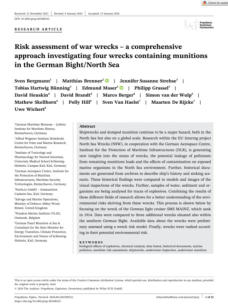

Authors: Sheng Wu, Nian Jiang, Shuai Zhang, Pingping
Zhang, Peng Zhao, Yang Liu, & Yanhui Wang
This document analyzes the technological feasibility and
potential environmental impacts of offshore floating
photovoltaic (PV) plants to highlight the advantages of
floating PV systems, particularly in marine environments,
and to address the current low technology readiness level
in this new field. It also seeks to explore the interactions
between offshore floating PV plants and the marine
environment throughout the entire life cycle of the PV
systems, from manufacturing to disposal.


.
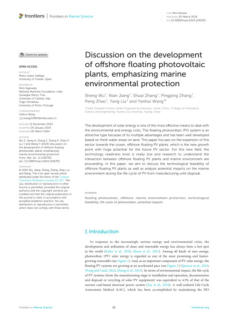

Authors: V. Trinadha Rao, V. Suneel, Venkata Sai
Gulakaram, & Chilukuri Lakshmi Sravani
This study focused on the computation and analysis of
monthly climatological Lagrangian coherent structures
(cLCS) in the Bay of Bengal (BoB) using 24 years of ocean
current and wind data to reveal the cLCS associated with
seasonal monsoon currents and mesoscale processes,
validate these structures with satellite imagery and
modeled oil spill trajectories, and demonstrate their
application in predicting the transport and accumulation
zones of pollutants like oil spills


.
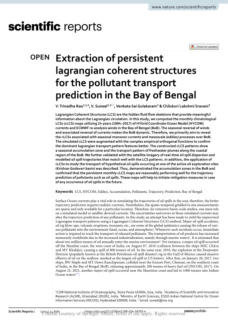

Authors:
Romain Stefanelli, Maria Rosa Beccia , Pier Lorenzo Solari,
David Suhard, Sophie Pagnotta, Aurelie Jeanson, Jean
Ulrich Mullot, Françoise Vernier, Christophe Moulin,
Marguerite Monfort, Jean Aupiai, Christophe Den Auwer
This study focused on understanding uranium
accumulation, speciation, and localization in marine biota,
specifically using mussels as sentinel species to assess the
environmental impact of uranium, particularly in marine
ecosystems, by employing various analytical,
spectroscopic, and imaging techniques. The study also
highlights the differences in uranium accumulation
between mussels from two different locations and outlines
future research directions to identify the proteins or
metabolites involved in uranium complexation.


.
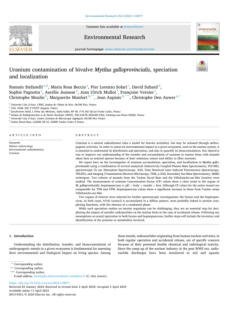
Authors: Changjing Fu, Yangming Xu, and Tianlong Zhao
This document discusses the findings from a flume model
test that examined the evolution pattern of riverbeds and
the mechanisms of local scour under unsteady flow
conditions to provide insights into the susceptibility of
pipelines to suspension during floods, the stages of this
suspension process, and the factors affecting erosion.
Additionally, it offers recommendations for enhancing
erosion resistance in pipeline-laying projects and suggests
that the study can serve as a reference for pipeline
engineering design and protection strategies.


.

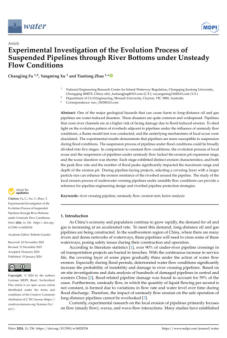
Authors: Jiarui Xie, Ruichao Xue, Fuqiang Niu, Benqing
Chen, and Yanming Yang
This article presents a study on the effects of high-intensity
impulsive noise from pile driving on fish, specifically
focusing on the large yellow croaker. It highlights the
importance of using advanced numerical acoustic models,
notably a 3D parabolic equation method, to accurately
predict underwater noise propagation in complex coastal
environments to demonstrate the inadequacy of simplistic
models and the necessity of considering three-
dimensional propagation effects to assess the
environmental impact on marine life accurately.


.

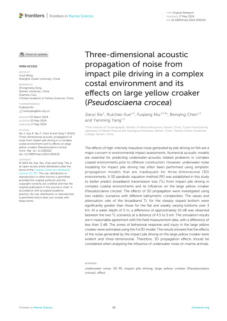

Authors: Muhammad Saladin Prawirasasra
This document thesis summarizes and highlights the key
features and findings of a series of scientific publications
related to the study of underwater vocalizations of
pinnipeds, the impact of ferry noise on ringed seals, the
effects of ship-radiated sound on pinnipeds, and the
analysis of wind-driven ambient sound spectra. It outlines
the specific focus of each publication and the ecological
and biological implications of the research conducted.


.
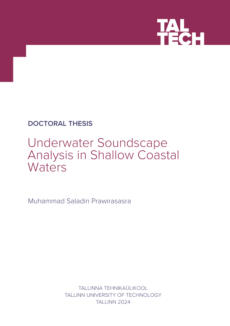
Authors: Han Tian, Junsheng Zhong, Jiangyuan Chen,
Yane Jiang, Jun Zhang, Wei Xie, Zuyuan Gao,
Yuchao Wang, Haozhen Liu, Sujing Wang, Fei
Zhang, Jie Yang, and Kedong Yin
This study documents the first recorded presence of Pacific
sleeper sharks in the deep waters off the southeast coast
of Hainan Island in the South China Sea. The study
involved using a dead cow as bait and a metal-framed
cage with cameras to observe the sharks' feeding
behavior. The findings indicate an expansion of the
known habitat range of this shark species and suggest
broader implications for understanding the geographic
connectivity and habitat ranges of large marine animals.
The study also highlights the potential impact of
anthropogenic influences, such as climate change, on the
distribution of marine species.


.

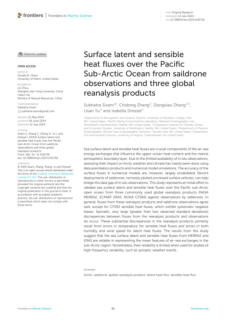

Authors: Subhatra Sivam, Chidong Zhang, Dongxiao
Zhang, Lisan Yu, and Isabella Dressel
This study evaluates the accuracy of sea surface latent and
sensible heat fluxes from three global reanalysis products
(NASA MERRA2, ECMWF ERA5, NOAA CFSR2) by
comparing them with observations from sail drones to
validate these reanalysis products in the context of the
Pacific sub-Arctic open ocean. It highlights discrepancies,
particularly with CFSR2, while suggesting that MERRA2
and ERA5 are generally reliable for representing mean air-
sea exchanges but may have limitations for high-
frequency variability studies.


.
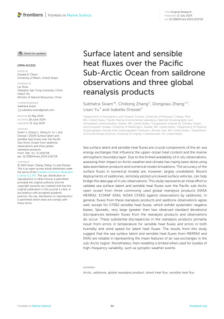

Authors: Martina Canessa, Rosella Bertolotto, Federico
Betti, Marzia Bo, Alessandro Dagnino, Francesco
Enrichetti, Margherita Toma, and Giorgio
Bavestrello
This study analyzes the impact of environmental and
human-induced stressors on the red gorgonian
Paramuricea clavata in the Mediterranean Sea. It discusses
the threats this species faces, such as heat waves and
fishing activities, and examines the correlation between
these stressors and the occurrence of epibiosis on the
gorgonian colonies. It also highlights the importance of
long-term monitoring to understand changes in marine
benthic communities.


.
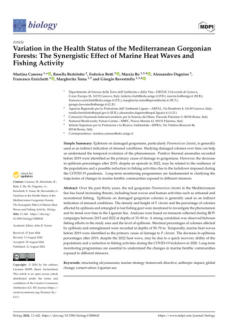
Authors:
Silvia Bossi, Luciano Blasi, Giacomo Cupertino, Ramiro dell
Erba, Angelo Cipollini, Saverio De Vito, Marco Santoro,
Girolamo Di Francia, and Giuseppe Marco Tina
This study analyzes the current state of monitoring
practices for floating photovoltaic (FPV) plants,
highlighting the need for standardized guidelines and
criteria for water quality monitoring and management. It
discusses the challenges and environmental impacts
associated with FPV systems, the importance of
monitoring key physico-chemical parameters, and the
potential of autonomous solutions for environmental
impact monitoring to identify gaps in the existing literature
and propose the development of a cohesive framework
for effective monitoring of FPV systems.


.

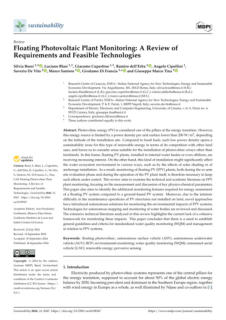
Authors: Michael C. Denes, and Erik van Sebille
The paper intends to describe and promote the features
and capabilities of the "plastic parcels" Python package to
inform about its functionalities for simulating the transport
and dispersion of plastics in the ocean, its integration with
the parcels framework, and its adaptability for various
computational environments. It also highlights the
package's modular design, user-friendly interface, and
potential applications in research and development
related to ocean plastic pollution modeling. Additionally, it
outlines future goals for the package, such as support for
macroplastics and cloud platform integration.


.

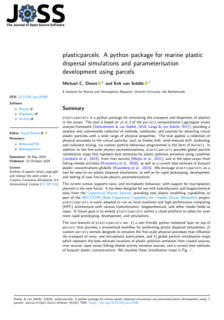



10 - Cellular adaptations of the scleractinian coral Madracis pharensis
to chronic oil pollution in a Mediterranean shipwreck.
Authors: Alessandro Nardi, Vasilis Resaikos, Magdalene
Papatheodoulou , Marta Di Carlo, Harini
Vedhanarayanan, Francesco Regoli, Stefania
Gorbi, and Carlos Jimenez
Chemical pollution in marine ecosystems affects stress
levels and interacts with climate change. This study
examined epibenthic communities near a shipwreck in
the Levantine Basin, comparing oil-contaminated and
clean areas. Results showed different community
structures over 11 years, with increased PAH levels in
impacted corals. The coral Madracis pharensis showed
adaptations to stress, but implications of these changes
are still unclear.
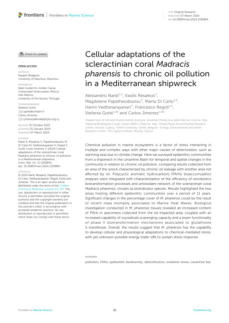



14 - Artificial structure selection by economically important reef
fishes at North Carolina artificial reefs.
Author: Ryan M. Tharp, Nathan J. Hostetter, Avery B.
Paxton, J. Christopher Taylor, and Jeffrey A.
Buckel.
Artificial reefs can help manage marine fisheries by
improving natural habitats. However, the selection of
structures for these reefs often lacks proper information.
From 2021-2022, 72 black sea bass, 34 gag, 27 greater
amberjack, nine almaco jack, and eight red snapper were
tagged near Cape Lookout, North Carolina. Black sea bass
showed little movement, while gag and red snapper
moved between structures. Greater amberjack and
almaco jack explored the most, favoring high relief
structures like vessels. These findings will aid managers in
selecting effective structures for artificial reefs.
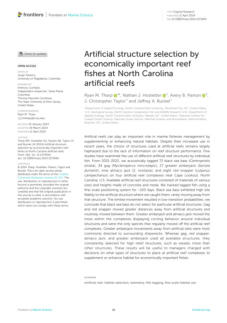



28 - An Icy Worlds life detection strategy based on Exo-AUV.
Authors: Bin Wang, & Hongde Qin
Icy Worlds like Europa and Enceladus may hold answers
to the search for life beyond Earth. Exo-AUV technology is
promising for detecting life in these icy oceans. This study
explores a hypothetical life detection mission on Europa,
focusing on goals, regions, and analysis needed for
success. It proposes strategies and outlines the technology
needed for Exo-AUVs, while addressing challenges and
suggesting a roadmap for their development to help
scientists find biosignatures and potential life forms.
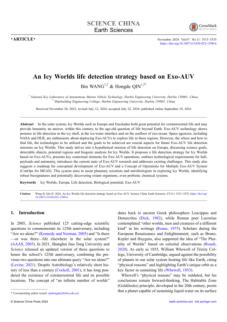



35 - An Assessment of Demersal Elasmobranch Occurrence and
Associated Habitats Using an Autonomous Underwater Vehicle
(AUV).
Authors: Jonathon Taylor, John A. Howe, James
Thorburn, Clive J. Fox, Christopher McGonigle,
Petra Rybanska
Plastic debris in coastal areas experiences weathering, but
the effects on different sides of the same plastic are not
well studied. This research collected 1573 plastic
fragments and found notable weathering differences
between exposed and shaded sides. The study revealed
that the sun-exposed sides showed more damage, with
increased cracks, while shaded sides remained smoother.
Results indicate uneven weathering, providing insights for
better predicting plastic degradation and informing
pollution reduction strategies.



37 - Benthic Feeding and Diet Partitioning in Red Sea Mesopelagic
Fish Resolved Through DNA Metabarcoding and ROV Footage.
Authors:
Kah Kheng Lim, Carlos Angulo-Preckler,
Christopher A. Hempel, Mohammad A. Qurban,
Vincent A. Pieribone, Carlos M. Duarte
Mesopelagic fish are important for carbon capture due to
their daily movements, but their diets are not well
understood in the Red Sea. This study looks at two
common species, lanternfish and lightfish, using DNA
analysis and video. Lightfish have a broader diet than
lanternfish, which mainly eat copepods. Both species also
consume other prey but differ in their dietary choices. The
study shows these fish feed on the sea floor, a rare
behavior. Their feeding helps carbon storage in the
ocean, highlighting the need for more research on their
ecological roles.



36 - Two sides of the same coin: weathering differences of plastic
fragments in coastal environments around the globe.
Authors:
Bo Hu, Mui-Choo Jong, João Frias, Irina Chubarenko,
Gabriel Enrique De-la-Torre, Prabhu Kolandhasamy, Md.
Jaker Hossain, Elena Esiukova, Lei Su, Hua Deng, Wenjun
Zhao, Yifan Zheng, Huahong Shi
Mesopelagic fish are important for carbon capture due to
their daily movements. This study looks at two common
species, lanternfish and lightfish, using DNA analysis and
video. Lightfish have a broader diet than lanternfish,
which mainly eat copepods. Both species also consume
other prey but differ in their dietary choices. The study
shows these fish feed on the sea floor, a rare behavior.
Their feeding helps carbon storage in the ocean,
highlighting the need for more research on their
ecological roles.
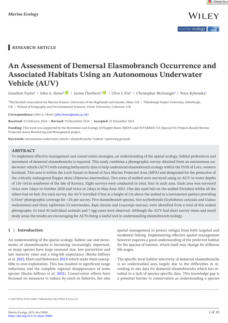
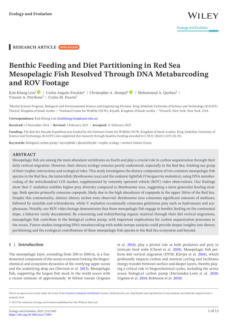
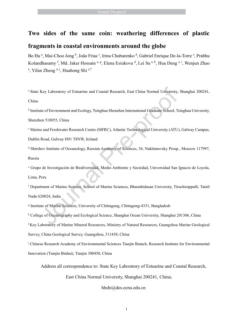






Author: Amy MacIntosh, Daniel T. Oldfield, Dioni I.
Cendon, Andrew D. Langendam, Nicholas
Howell, Daryl L. Howard, Tom Cresswell
This study identifies a dense crystalline matrix of baryte
(BaSO4) in a decommissioned subsea well tubular pipe,
influenced by changing chemical and physical
environments. The scale's radioactivity is strongly
correlated with baryte, and it gradually formed within the
pipe's interior over 17 years of production. This
knowledge can help in decommissioning planning and
mitigate potential radiological risks to marine ecosystems,
enhancing offshore petroleum infrastructure
decommissioning decisions.


04 - Naturally occurring radioactive materials in offshore
infrastructure: Understanding formation and characteristics of
baryte scale during decommissioning planning
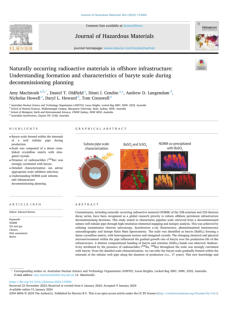



05 - Sea of plastic: representations of the sea and pro-environmental
attitudes and behaviors regarding marine plastic pollution in
Peru and Chile
Authors: Fernanda Saavedra, Marisol Mego, Sofia Ticona,
Martin Thiel, Jostein Baeza, and Agustín
Espinosa
This study examines the attitudes and pro-environmental
behaviors of Peruvian and Chilean citizens towards
marine pollution, focusing on plastic pollution. It shows a
positive perception of the sea, which fulfills recreational
and economic purposes. Environmental concern is
anthropocentric, focusing on individuals and society.
However, most initiatives proposed are individual actions,
indicating a low commitment from authorities.
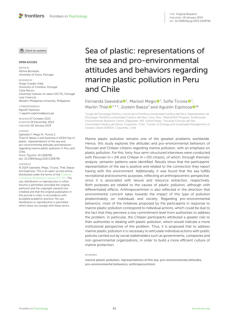



06 - Biofouling initial succession on offshore artificial substrate under
subtropical conditions
Author: Vanessa o. agostini & Carla P. Ozorio
This study examines the macrofouling community on
artificial substrates exposed to offshore subtropical marine
environments. It reveals that depth, exposure time, UV-
radiation, rainfall, temperature, pH, salinity, water
chlorophyll-a, and zooplankton supply contribute to the
establishment of the community. It also demonstrate that
species richness and density increased at depths of 3m
and 22m, while zooplankton composition did not show a
simultaneous temporal relationship with invertebrate
recruitment.
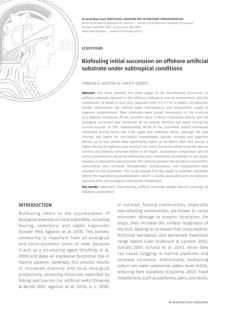

Authors: Peter A. Todd, Clara Lei Xin Yong, Sze Hui Foo,
Lynette Shu Min Ying and Janine Ledet
Marine microplastics pose a global pollution issue,
necessitating the development of plastic-less field
sampling techniques. Traditional designs can be
repurposed or self-developed using materials like metal,
wood, silk, and cork. These techniques can significantly
reduce or eliminate plastics from the field sampling
process, reducing contamination and promoting
sustainable practices in marine environments.


07 - Plastic-less equipment for sampling marine microplastics
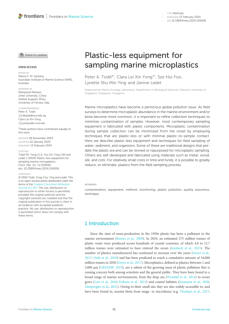



08 - Editorial: New plastic pollution types and novel sources of
microplastic pollution in marine systems
Author: Sonja M. Ehlers, Julius A. Ellrich, and Ignacio
Gestoso.
Plastic pollution is a growing concern, with animals
entangled in discarded plastic and microplastics
consumed during foraging. New sources, such as
weathering polymer-based paints, have been identified
recently. These plastic forms differ from regular debris in
appearance, chemical composition, and environmental
fate. This study aims to increase awareness of these novel
plastic pollution sources and their potential environmental
effects, enabling them to be characterized and
incorporated into mitigation measures.
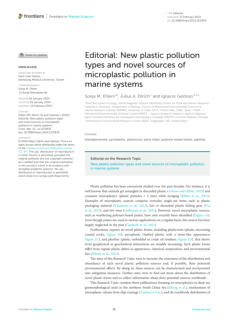



11 - The present and future contribution of ships to the underwater
soundscape
Authors:
Luca Possenti, Lennart de Nooijer, Christ de Jong, Frans-
Peter Lam, Simon Beelen, Johan Bosschers, Tom van
Terwisga, Rens Stigter, and Gert-Jan Reichart
Since the industrial revolution, the ocean has become
noisier due to increased shipping, which can negatively
impact fish, invertebrates, marine mammals, and birds.
Engineers are now exploring ways to reduce ship noise in
new ship designs. This review discusses the future
underwater soundscape in the ocean, comparing open
and shallow seas, and the effects of water quality on ship-
radiated noise, particularly propeller cavitation noise.
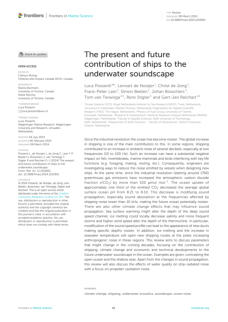



12 - Assessment of mariculture-derived microplastic pollution in
Dapeng Cove, China
Authors: Yong Xu, Shilin Li, Jianlei Chen, and Zhengguo
Cu
Marine microplastic pollution, along with ocean
acidification and greenhouse effects, is a global concern.
This study highlights a moderate level of microplastic
pollution, with fibers being the predominant shape in
Dapeng Cove (China). Long-term mariculture
development has led to a large amount of microplastics in
water and sediments. The study suggests enhancing
regulations on plastic products, reducing microplastic
production and release, and developing alternatives to
plastic fishing gear.
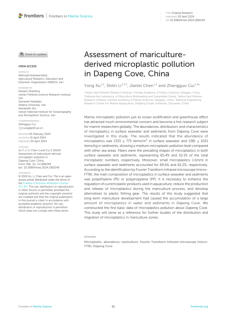
Author: Abirami A
Marine pollution, a major global issue, is caused by
human activities like improper disposal, shipping, and
overfishing. It harms ecology, health, and economic
institutions. Solutions include international agreements,
sustainable fishing, improved waste disposal, and raising
awareness. Governments, environmental organizations,
and advocacy groups are working to reduce pollution,
protect biodiversity, and reduce financial expenses.


13 - Marine Pollution and Waste Management
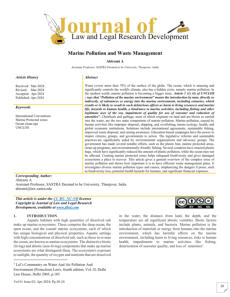


20 - Offshore oil and gas infrastructure plays a minor role in marine
metapopulation dynamics
Authors: Ronen Galaiduk, Dianne L. McLean, Conrad W.
Speed, Dougal Greer, Rhys McIntosh, Eric A.
Treml
This study reveals that the removal of offshore oil and gas
infrastructure in the Bass Strait, Australia, has varying
effects on marine population dynamics, including
connectivity. While platforms are not major sources for
most species, they act as modest sources for Corynactis
australis (jewel anemone). Subsea pipelines, however, act
as stepping-stones for all species except for long-spined
sea urchin. It recommends that decisions to remove
offshore infrastructure should be made on a platform-by-
platform basis, considering pipeline contributions to
connectivity and metapopulation dynamics.
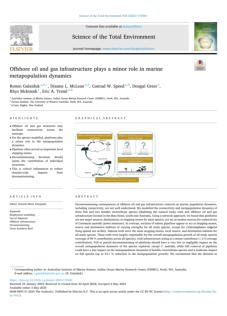



21 - Revision of China’s marine environmental protection law:
history, background and improvement

Author: Ruiqiang Liu
China’s law on marine environmental protection is part of
environmental law and outlines the measures to protect
marine environments. Since its introduction in 1982,
China's Marine Environmental Protection Law has been
revised and amended to form a legal system based on the
Constitution. The 2023 revision focused on improving
mechanisms, coordinating land and sea efforts,
enhancing supervision, managing marine litter, protecting
biodiversity, regulating estuaries, and enforcing strict
liability.
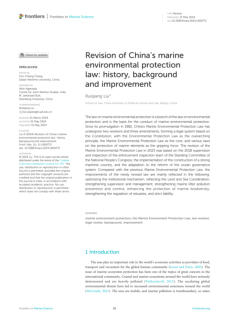


23 - Metatranscriptomic response of deep ocean microbial
populations to infusions of oil and/or synthetic chemical
dispersant
Author: Tito D. Peña-Montenegro, Sara Kleindienst,
Andrew E. Allen, A. Murat Eren, John P.
McCrow, Jonathan Arnold, Samantha B. Joye
Oil spills significantly impact the marine environment,
impacting the local microbiome. Previous studies showed
that synthetic dispersants alone did not enhance
microbial activity or oxidation rates of hydrocarbon
components. However, exposure to oil, but not
dispersants, increased the abundance of other taxa and
stimulated hydrocarbon oxidation rates. This study
interpreted metatranscriptomic data to explore how
specific microbial community components respond to
different organic carbon exposure regimes.
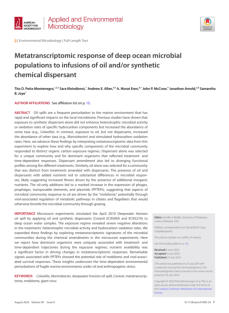



22 - The Brazilian Santos basin underwater soundscape monitoring
project (PMPAS-BS)

Authors:
Jose Antonio Moreira Lima, William Soares Filho, Fabio C.
Xavier, Thiago Pires de Paula, Angela Spengler, Fernando
Goncalves de Almeida, Diogo Peregrino Correa Pereira,
Valeria Souza Rego, Catia Galotta, Carlos Correa Junior,
and Alexandre Bazyl
The Santos Basin Underwater Soundscape Monitoring
Project (PMPAS-BS) is a Brazilian initiative aiming to
quantify and assess hydroacoustic noise from
anthropogenic sources in the southeastern Brazilian
continental margin of the South Atlantic Ocean. The
project covers over 251,000 km2 and uses mobile, fixed
shallow-water, and fixed oceanic monitoring methods. It
focuses on noise associated with oil and gas exploration,
production activities, and shipping lanes.
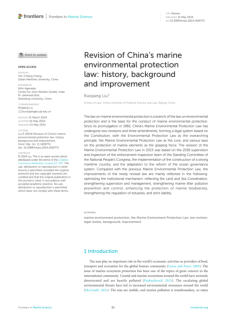




27 - Comparing the environmental impacts of pollution from two
types of industrial zones on the coast
Authors: Jian Liang, Chae-Woo Ma, and Kwang-Bae Kim
This study compares the environmental impact of
ironworks and shipyards along South Korea's coast. Heavy
metal pollution near these zones was assessed using the
Pollution Load Index (PLI) and Nemerow Pollution Index
(Pn) to provide insights for the South Korean government
in managing coastal industrial zones and formulating
relevant policies.
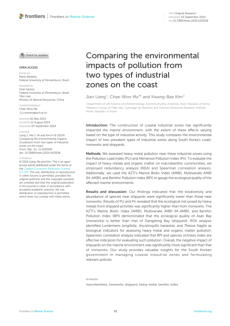



31 - A Submersible Power Station: Part A Helium Power Conversion
Unit
Authors: Jon Serna, Eduardo Anselmi Palma, Stefania
Romero, Dimitrios Fouflias, and Pericles Pilidis
Nuclear power holds promise in the green revolution, but
public opinion is mixed. A submersible nuclear power
station concept is presented to address concerns and
promote growth. This submarine can move under its own
power, be earthquake-proof, and be built, commissioned,
maintained, refueled, and scrapped in countries like the
UK. The design, similar to the largest existing nuclear
submarines, could deliver 0.6 to 1 GW of electrical power.
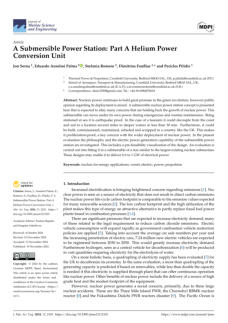


32 - Using underwater mini-ROV for coral eDNA survey: a case
study in Okinawan mesophotic ecosystems
Authors: Noriyuki Satoh, Frederic Sinniger, Haruhi
Narisoko, Shinichiro Nagahama, Nobuhiro
Okada, Yuki Shimizu, Yuki Yoshioka, Kanako
Hisata, Saki Harii
Mesophotic coral ecosystems (MCEs) are light-dependent
communities at depths of 30-150 meters, providing refuge
against thermal stress. They have a high diversity of
communities and are not immune to anthropogenic
threats. To detect and characterize MCEs, the study’s
authors improved the mesophotic scleractinian survey
method using environmental DNA metabarcoding
analysis, testing this approach at upper mesophotic sites in
Okinawa, Japan, detecting dominant coral genera and
other genera.
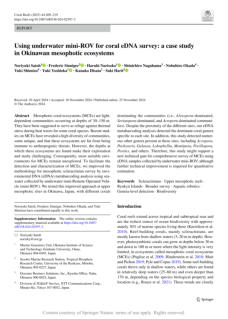


33 - Light Pollution in the Arctic Marine Environment
Authors: Ifeoluwa Ihotu Kayode-Edwards, and David
Osagie Agbontaen
Light pollution, a form of artificial light, disrupts natural
illumination, disrupting ecosystems and obscuring celestial
observations. It is particularly important in the Arctic due
to its unique environmental and cultural significance. The
region's prolonged winter darkness is crucial for species
survival and traditional practices, while minimal light
pollution impairs astronomical research. Mitigating light
pollution supports biodiversity conservation, indigenous
culture preservation, and scientific advancement,
highlighting the need for sustainable lighting practices
and targeted policies.
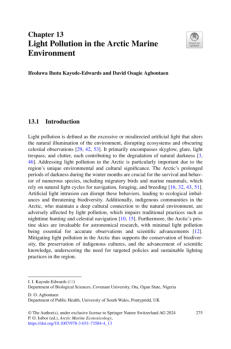


34 - Microplastics pollution in Indian marine environment: sources,
effects and solutions
Authors:
Josephine Anthony, Sureka Varalakshmi, Ashok Kumar
Sekar, Kumar Thalavai Sivasankarasubbiah, Thilagam
Harikrishnan, Vijaya Raghavan Rangamaran, Dharani
Gopal, and Kirubagaran Ramalingam
Ingestion of microplastics by marine organisms and
humans can lead to physiological harm, including
inflammation, digestive blockages, and hormonal
imbalances. This review highlights the sources, types, and
transport of microplastics, as well as analytical methods for
detecting pollution. Comprehensive strategies, including
policy interventions and public awareness campaigns, are
essential for preserving marine ecosystems and human
livelihoods.
